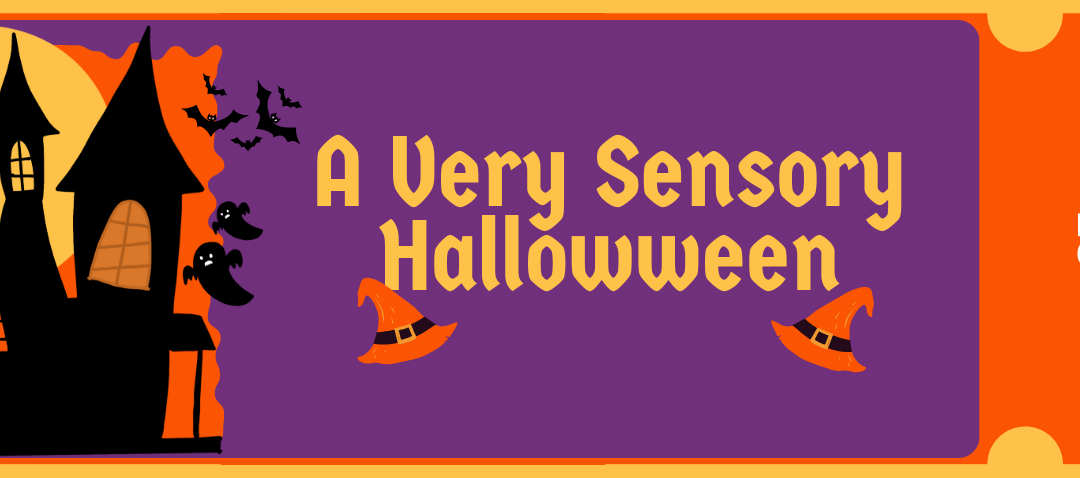A Very SENSORY Halloween
A large number of American kids love Halloween and look forward to it all year for any number of reasons: dressing up, the change in the seasons, Trick-Or-Treating, spooky stories, and, let’s face it, candy. But for some of our kids with sensory differences, Halloween can be scary for other reasons: lots of loud sounds, uncomfortable costumes in fabric that doesn’t breathe, and unpredictability around every corner.
If your child struggles with sensory overload or managing competing or chaotic sensory information, navigating the sensory-rich environment of Halloween can be particularly challenging. There can be an additional challenge if there are other children in your household or neighborhood who are looking forward to participating in some of the typical Halloween traditions. If you are in this particular situation where there are traditional Halloween seekers and sensory-averse participants, here are some suggestions to help you walk the fine line to hopefully meet everyone’s needs:
Start your Halloween planning early; consider starting with a social story. A social story is a narrative that helps to illustrate certain situations or problems. Social stories can offer an opportunity to discuss or reflect on scenarios that have a potential for or history of being problematic. They can offer the foreshadowing that some children need to process changes in their typical routine. Social stories can be as simple as looking back at pictures from previous Halloweens and discussing what worked and what didn’t. Don’t rush your child to give you answers right away, and consider that some children need to have a discussion a few times to prepare themselves or to gain any insight into the past.
Set your priorities as a family. Maybe no one really needs Trick-Or-Treating at all, or pumpkin carving isn’t a deal breaker. After your group has decided on their priorities, consider any adaptations to allow for a sensory-sensitive child to participate and have flexibility where their sensory limitations are concerned. Is lighting an issue for your child? Do you have to Trick-Or-Treat in the dark or could you go when there is still daylight? Are there homes that have scary lights, sounds, or decorations? Could you skip that block? If your child doesn’t like the feeling of the “pumpkin guts,” could they paint their pumpkin or put stickers on a pumpkin instead of carving it? Are the sounds of Halloween too much – the yelling of “Trick-Or-Treat,” or children who tend to get louder as the night wears on? Consider noise-canceling headphones. Does someone in your party have language difficulties or trouble interacting with strangers? Maybe they would do better with a sign that says “Trick-Or-Treat!” on one side, and “Thank you” on the other. The words don’t need to be spoken to be communicated. Does your child struggle with clothing textures? Maybe they have a simpler costume or clothing underneath that allows for a quick change. Speaking of costumes, for some sensory kids, it’s worthwhile to “practice” wearing their costume, maybe to watch a favorite movie, to get used to how it feels.
As Halloween unfolds, watch your child for changes in their behavior as it could offer a window into how they are managing the sensory information around them. Emotional changes are common signs of sensory overload and can come in a variety of ways, everything from silliness to aggression, crying, sleepiness, or even body or stomach aches.
For Halloween, be realistic about what is or is not possible; be flexible when it’s getting too hard, and be gentle on yourself if you cannot honor everyone’s needs. We are all doing our best.
Does your child struggle with sensory differences more than the average student? Please talk to us in the Occupational Therapy (OT) department. We want to help. -Brianna and Bridget

